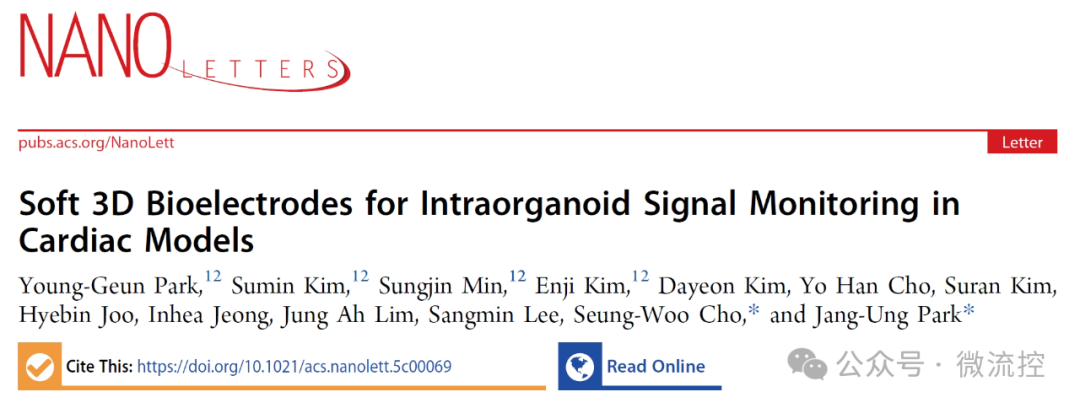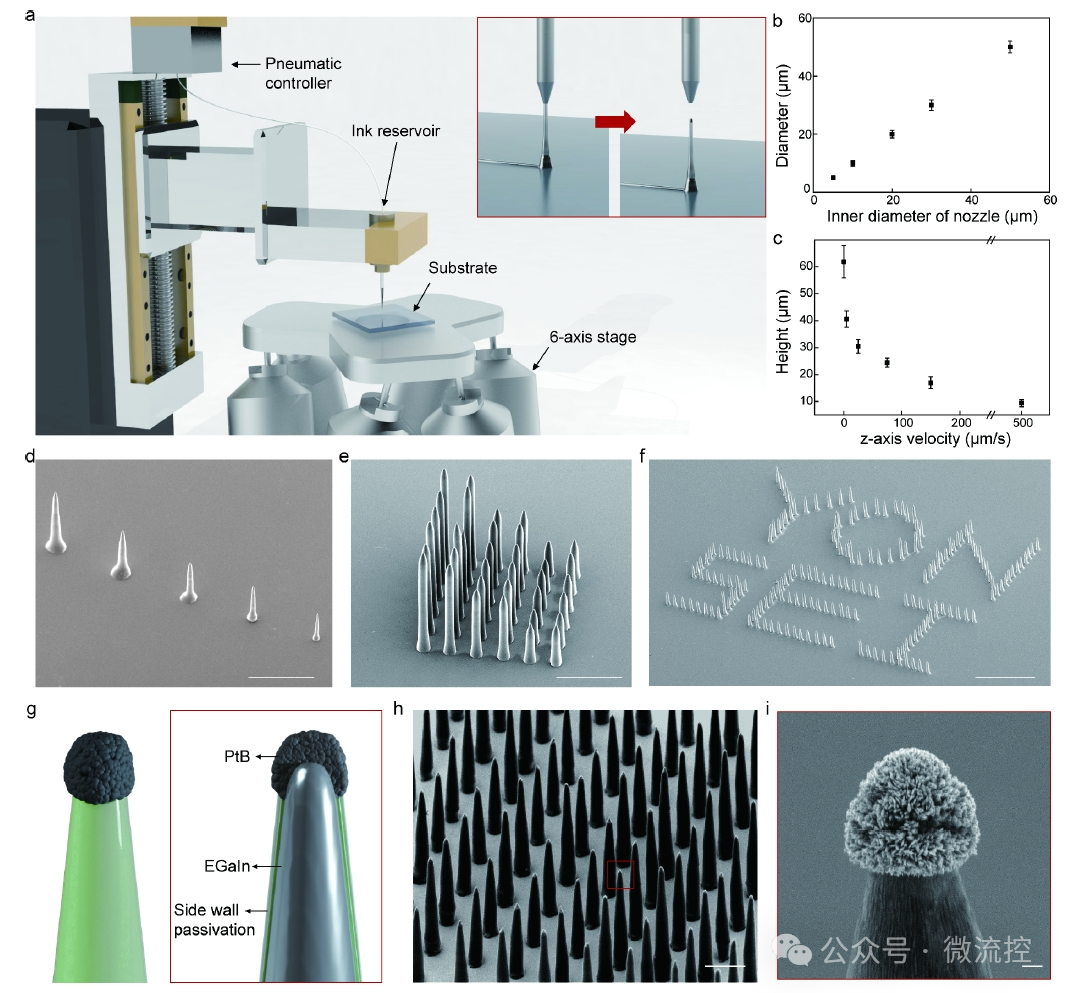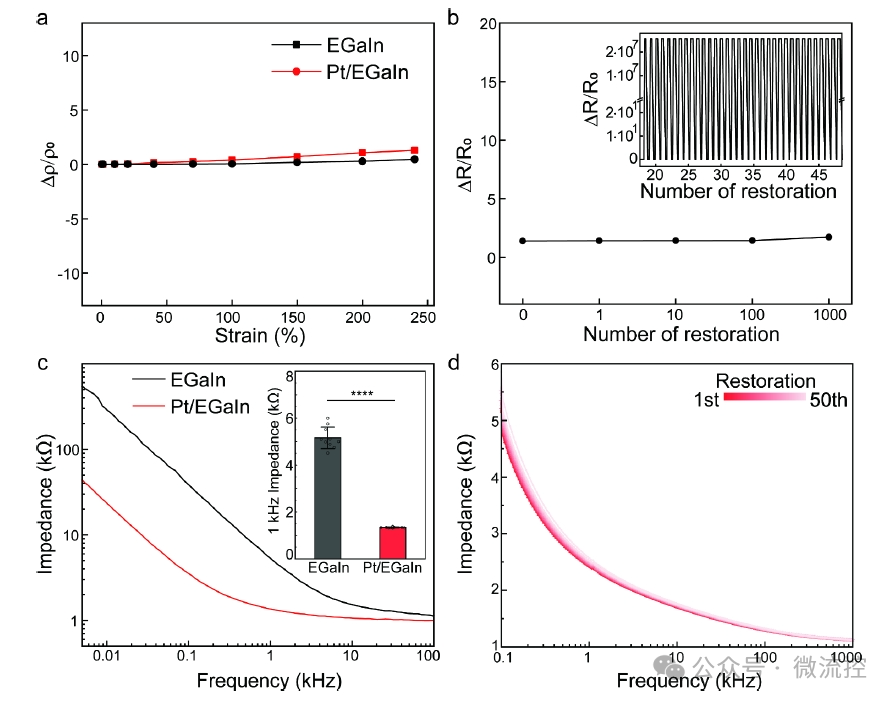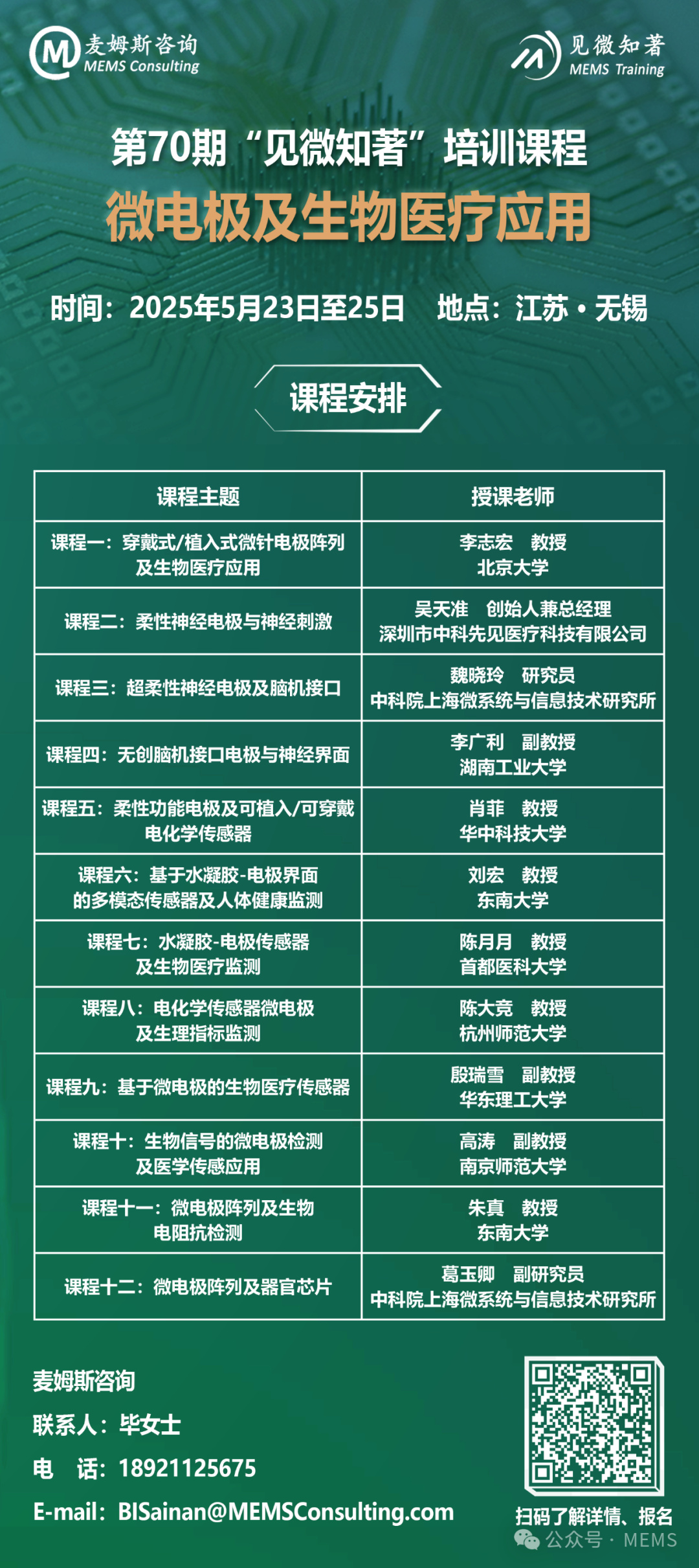The continuous monitoring of physiological activities within the internal regions of 3D organoids has brought great hope for advancing organoid-based research. However, traditional methods are limited to capturing signals from the peripheral surface of organoids, restricting in-depth understanding of internal dynamics.According to MEMS Consulting, a high-level research paper titled “Soft 3D Bioelectrodes for Intraorganoid Signal Monitoring in Cardiac Models” was published online by Professor Jang-Ung Park’s team from Yonsei University in Nano Letters (IF: 9.6). This study proposes a soft 3D bioelectrode platform for continuous intraorganoid signal monitoring. These bioelectrodes are formed through liquid metal 3D printing, designed with customizable geometric parameters, including height and diameter, to accommodate various organ structures. The electrodes are soft compared to tissue, minimizing damage to cardiac organoids and ensuring reliable signal recording at a stable interface even under dynamic deformations caused by rhythmic contractions or displacements in a watery environment. Its array configuration can simultaneously record electrocardiograms (ECG) from 32 organoids. This scalable platform demonstrates real-time monitoring of drug-induced ECG responses, highlighting its potential for high-throughput drug screening.
This study proposes a soft 3D bioelectrode platform for continuous intraorganoid signal monitoring. These bioelectrodes are formed through liquid metal 3D printing, designed with customizable geometric parameters, including height and diameter, to accommodate various organ structures. The electrodes are soft compared to tissue, minimizing damage to cardiac organoids and ensuring reliable signal recording at a stable interface even under dynamic deformations caused by rhythmic contractions or displacements in a watery environment. Its array configuration can simultaneously record electrocardiograms (ECG) from 32 organoids. This scalable platform demonstrates real-time monitoring of drug-induced ECG responses, highlighting its potential for high-throughput drug screening. The main advantage of liquid metal bioelectrodes lies in their softness compared to tissue, allowing for a seamless and intimate interface with cardiac organoids, reducing cellular damage. Additionally, they possess good conductivity and self-healing capabilities, maintaining stable signal recording in dynamic environments (e.g., rhythmic contractions of cardiac organoids). Furthermore, through 3D printing technology, the geometric parameters of the electrodes (such as height and diameter) can be customized to fit the structures of different organoids.The study achieved high-precision manufacturing of liquid metal electrodes through a high-resolution 3D printing system. By precisely controlling the inner diameter of the glass capillary nozzle and the printing speed, the diameter and height of the electrodes can be adjusted. For example, using a nozzle with an inner diameter of 5 micrometers can print electrodes with a minimum diameter of 5 micrometers, while adjusting the z-axis speed of the printing platform can achieve electrode heights of up to 70 micrometers. This technology overcomes the limitations of traditional methods, enabling the manufacture of electrodes suitable for the complex microenvironments within organoids.
The main advantage of liquid metal bioelectrodes lies in their softness compared to tissue, allowing for a seamless and intimate interface with cardiac organoids, reducing cellular damage. Additionally, they possess good conductivity and self-healing capabilities, maintaining stable signal recording in dynamic environments (e.g., rhythmic contractions of cardiac organoids). Furthermore, through 3D printing technology, the geometric parameters of the electrodes (such as height and diameter) can be customized to fit the structures of different organoids.The study achieved high-precision manufacturing of liquid metal electrodes through a high-resolution 3D printing system. By precisely controlling the inner diameter of the glass capillary nozzle and the printing speed, the diameter and height of the electrodes can be adjusted. For example, using a nozzle with an inner diameter of 5 micrometers can print electrodes with a minimum diameter of 5 micrometers, while adjusting the z-axis speed of the printing platform can achieve electrode heights of up to 70 micrometers. This technology overcomes the limitations of traditional methods, enabling the manufacture of electrodes suitable for the complex microenvironments within organoids. Researchers found through accelerated aging tests that the Pt/EGaIn electrodes exhibited minimal impedance change over 7 days, equivalent to 104 days under physiological conditions, demonstrating good long-term stability. Live/Dead experiments revealed no significant differences in cardiac organoids in the Pt/EGaIn environment compared to the control group, indicating that the electrodes have low toxicity and are suitable for long-term monitoring of biological tissues.Paper link:https://doi.org/10.1021/acs.nanolett.5c00069
Researchers found through accelerated aging tests that the Pt/EGaIn electrodes exhibited minimal impedance change over 7 days, equivalent to 104 days under physiological conditions, demonstrating good long-term stability. Live/Dead experiments revealed no significant differences in cardiac organoids in the Pt/EGaIn environment compared to the control group, indicating that the electrodes have low toxicity and are suitable for long-term monitoring of biological tissues.Paper link:https://doi.org/10.1021/acs.nanolett.5c00069



